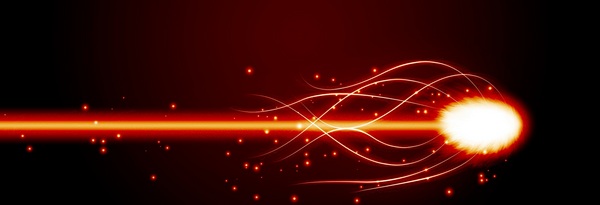In this GE blog entry, Walter Kraus, the chairman of the Li-Fi Consortium, sheds insights on the different Li-Fi technologies available to the market at the moment.
Li-Fi (Light Fidelity) is an upcoming revolutionary wireless network technology that uses light to transfer data. With a number of benefits over traditional Wi-Fi (Wireless Fidelity) systems, the real appeal of Li-Fi is its unique ability to elegantly solve one of our largest current problems in wireless data communication: the so-called ‘spectrum crunch’.
Within a few years we will double data transmission speed.
The spectrum crunch describes the danger that our wireless networks may break down due to the constantly increasing load of data being transferred wirelessly. This is caused by our increasingly higher demands for quality content.
Cisco analysed this much-discussed problem and found that our demand for wireless bandwidth has increased geometrically during the last few years, and it will continue to do so in the years to come. As an example, images and films have continuously higher resolutions in order to make full use of the brilliant display technology in our new TVs, smartphones and computers – a quality we all happily take advantage of and now take for granted. Given our insatiable demand for wireless technology and data transfer, the future would appear to lie with Li-Fi.
Compared to Wi-Fi, Li-Fi technology is faster, consumes considerably less energy, is much more secure, causes no EMC issues (i.e. it will not cause interference with other electrical items, as can be the case with Wi-Fi connections) and has not been linked to any health problems. Li-Fi technology is divided into two types. One is based on visible light frequencies; sent by modern LEDs. The other uses laser-infrared technology, which operates in the non-visible range – a technology that has been used for decades, for example in TV remote controls.
 |
|
Li-Fi transmissions are faster and safer than conventional Wi-Fi, says Walter Kraus, the chairman of the Li-Fi Consortium. (Photo Courtesy of GE) |
SPEED AND SECURITY
While Li-Fi in the visible range is typically limited in its transmission speed to 100 megabits per second, infrared-laser technology operates today in the gigabit per second range. Members of the Li-Fi Consortium have already demonstrated effective 10 gigabits (10,000 megabits) per second wireless data transfer rates with infrared-laser technology. Within a few years, we will have doubled data transmission speeds and extended the range considerably. That is where this technology is heading.
To understand what it means to communicate in the gigabit range, imagine this: downloading a 2-hour high definition movie will take the average computer up to two hours. With Li-Fi operating at a rate of 10 gigabits, the same movie is transferred in a matter of seconds.
Our demand for wireless bandwidth has increased geometrically during the last few years, and it will continue to do so in the years to come
LED Li-Fi technology has reached gigabit-class data transmission rates in the lab. This is done by splitting up different visible frequencies and sending lower data rates over each of these frequencies simultaneously and then putting the data streams back together again. This process is called “frequency-division-multiplexing” and requires a larger research and development budget and a more complex and expensive production to bring it into everyday use.
On the other hand Li-Fi using infrared-laser technology uses only a single frequency and does not yet need multiplexing. As development progresses, when we proceed to data rates of hundreds of gigabits per second, multiplexing will probably be applied in to infrared-laser technology too.
Seen from a technology development point of view, infrared-laser technology is the most promising tool for achieving high data transfer rates. It exceeds the technological abilities of Wi-Fi by far – and opens up an exciting new future for data network communication.





 CN
TW
EN
CN
TW
EN




